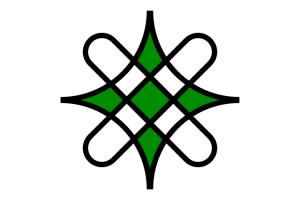Difference between revisions of "Language/Hausa/Grammar/Plurals"
m (Quick edit) |
m (Quick edit) |
||
| Line 56: | Line 56: | ||
<hr>If you have any questions, please ask them in the comments section below.<br>Feel free to edit this wiki page if you think it can be improved. 😎 | <hr>If you have any questions, please ask them in the comments section below.<br>Feel free to edit this wiki page if you think it can be improved. 😎 | ||
==Related Lessons== | |||
* [[Language/Hausa/Grammar/Conditional-Tense|Conditional Tense]] | |||
* [[Language/Hausa/Grammar/How-to-Use-Be|How to Use Be]] | |||
* [[Language/Hausa/Grammar/Pronouns|Pronouns]] | |||
* [[Language/Hausa/Grammar/Past-Participle-in-Hausa|Past Participle in Hausa]] | |||
* [[Language/Hausa/Grammar/Gender|Gender]] | |||
* [[Language/Hausa/Grammar/Past-Tense|Past Tense]] | |||
* [[Language/Hausa/Grammar/Indefinite-Articles-in-Hausa|Indefinite Articles in Hausa]] | |||
* [[Language/Hausa/Grammar/Prepositions|Prepositions]] | |||
* [[Language/Hausa/Grammar/Negation|Negation]] | |||
* [[Language/Hausa/Grammar/Imperative-Tense|Imperative Tense]] | |||
{{Hausa-Page-Bottom}} | {{Hausa-Page-Bottom}} | ||
Revision as of 22:53, 25 February 2023
Hi Hausa learners!😊
Learning Hausa Grammar can be a challenging task, but it is also an incredibly rewarding one. With the right approach and dedication, you can master the language in no time. In this lesson, we will focus on plurals in Hausa.
Plural Formation
In Hausa, there are two ways to form plurals: by adding a suffix or by reduplication.
Suffix
The most common way to form plurals in Hausa is by adding a suffix. The suffix used depends on the gender of the noun. For masculine nouns, the suffix -aɗa is added, while for feminine nouns, the suffix -ai is added.
For example:
- Masculine noun: gida (house) → gidaɗa (houses)
- Feminine noun: mace (woman) → macei (women)
Reduplication
Another way to form plurals in Hausa is by reduplication. This means repeating the same word twice. This method is mainly used for animals and plants.
For example:
- Doki (dog) → dokido (dogs)
- Gero (flower) → gergero (flowers)
Plural Agreement
When using a plural noun, the verb and adjectives must agree with it. This means that they must also be in the plural form.
For example:
- Gidaɗa suna da kyau. (The houses are nice.)
- Macei suna tafiya. (The women are going.)
Plural Pronouns
In Hausa, there are special pronouns used to refer to plural nouns. These pronouns are mu, ki and su.
- Mu is used to refer to a group of people that includes the speaker.
- Ki is used to refer to a group of people that does not include the speaker.
- Su is used to refer to a group of people or things, regardless of whether the speaker is included or not.
For example:
- Mu suna tafiya. (We are going.)
- Ki suna tafiya. (You are going.)
- Su suna tafiya. (They are going.)
Conclusion
In this lesson, we have looked at how to form plurals in Hausa, as well as how to use them correctly. To improve your Hausa Grammar, you can also use the Polyglot Club website. Find native speakers and ask them any questions!
If you have any questions, please ask them in the comments section below.
Feel free to edit this wiki page if you think it can be improved. 😎
